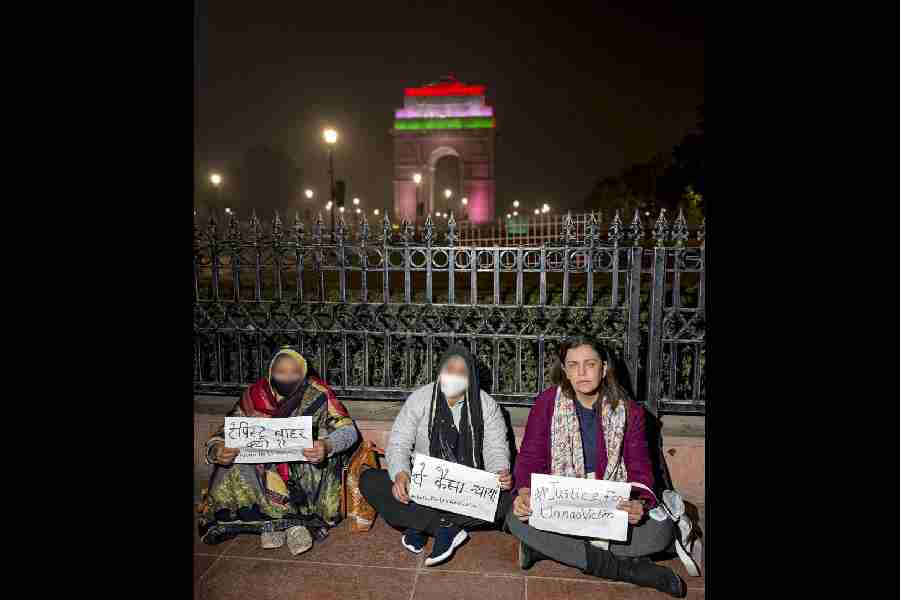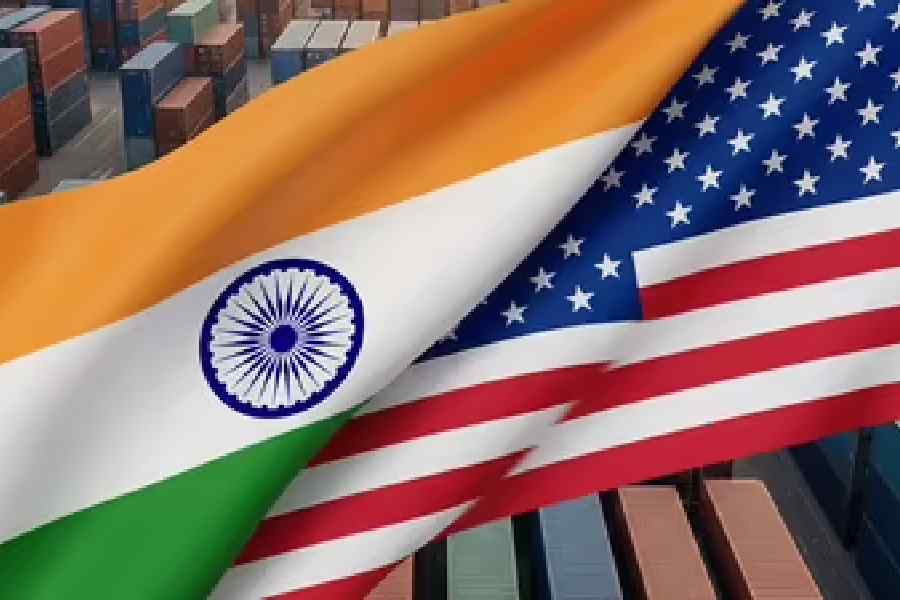 |
| Narendra Modi |
June 16: Hundreds of years from now, a history of Gujarat resurrected from deep down below will dwell heavily on the Vibrant Gujarat Summit but not mention the 2002 riots if Narendra Modi has his way.
Modi did an Indira Gandhi a year ago by burying a “time capsule” intended to help future generations learn about our times, and is now accused of overplaying his role and whitewashing unpleasant facts.
The contents of the time capsule have only now become public following a Gujarat government reply to an RTI application moved by the Congress.
Supposedly representative of life in a particular era, a time capsule gives post-dated bragging rights to those with visions of grandeur. It is a collection of documents and audio-visual material, stuffed into a container and buried at a prominent site for the benefit of future historians. Or, as is sometimes done, it is launched into space on a craft for future space-farers or aliens.
Modi buried his capsule inside the foundation of the Mahatma Mandir in Gandhinagar when the memorial’s construction began in May last year, promising to describe the past 50 years of the state’s history.
The list of contents shows that Mahatma Gandhi, Vallabhbhai Patel and Modi’s predecessors as chief minister have received passing mention. Ninety per cent of the capsule — a 3ft-by-2.5in stainless-steel cylinder expected to last between 200 and 1,000 years — devotes itself to Modi’s alleged achievements.
The Congress has threatened to dig out and destroy it whenever the party comes to power — as the Janata Party government had done to Indira’s capsule in the late 1970s — saying Modi’s capsule merely betrays his “obscene obsession with himself”.
“The material is mostly about Modi and his tenure of the past few years,” state Congress president Arjun Modhwadia said. “It seems as though from Mahatma Gandhi and Sardar Patel to Jivraj Mehta (Gujarat’s first chief minister) and Keshubhai Patel (Modi’s predecessor), nobody has contributed to the state’s progress.”
Senior BJP leader Yamal Vyas dismissed the allegations, saying: “After all, Modi has been Gujarat’s longest-serving chief minister. If there is more material in the time capsule relating to his period, that’s only natural.”
The capsule’s 14 printed documents and 29 compact discs “reflect Modi’s desperation to seek ways of immortalising himself”, said social scientist Gaurang Jani.
Gandhian activist Prakash Shah said the capsule’s contents show that Modi is a “megalomaniac” who believes that “Gujarat ends and begins with him”.
Ironically, Indira faced similar charges after burying a time capsule outside the Red Fort gates on August 15, 1973, carrying material commissioned by the Indian Council of Historical Research (ICHR) and prepared by S. Krishnaswamy, a history professor with Madras Christian College.
The material was to describe India’s progress in the first 25 years after Independence but was said to have focused mainly on the lady who would a couple of years later be worshipped in the slogan: “India is Indira and Indira is India.”
According to reports, Krishnaswamy’s text incorporated paraphrased versions from the Encyclopaedia Britannica and government handouts, vetted and burnished by the education and social welfare ministry.
It led to a war of words between the author and T. Badrinath, Tamil Nadu commissioner for archives and historical research, to whom Krishnaswamy had sent a copy of the documents on his own.
Badrinath condemned the contents with the comment: “The journey from a-history to anti-history is short. Shorter still is the journey to fancy. The shortest, however, is the journey to collective lies....”
Among the claims Badrinath attacked was one that India had eliminated the threat of famine.
In a letter to The Hindu, Krishnaswamy accused Badrinath of taking a jaundiced view of history. Deliberately or unwittingly, he revealed a secret: that the capsule ran into 30 pages.
Indira denied any knowledge of the contents and the ICHR demanded an explanation from Krishnaswamy for “breaching secrecy” by giving Badrinath a copy and making revelations.
Union minister and Congress member S. Jaipal Reddy today refused to compare Modi’s capsule with Indira’s, saying merely: “Time capsules are not required in a democracy. If there are to be capsules, they should record scientific achievements and facts and not socio-political issues, which lend themselves to different interpretations at different points of time.”
BJP spokesperson Ravi Shankar Prasad justified Modi’s capsules: “After all, Gujarat has a chequered history from Gandhiji, Patel and Jivraj Mehta (to Modi). It is India’s fastest-growing state, so the new initiatives must be recorded for posterity.”
He added: “Hers (Indira’s) was a personal eulogy; his (Modi’s) is an objective account.”
Some media reports have said Mayavati is planning a time capsule of her own, suggesting the possible birth of a new trend among Indian politicians to try and immortalise themselves for posterity.
In the US, many institutions and research organisations have been burying time capsules since the early 20th century, often with specific instructions on when they are to be dug out and unlocked —ranging from periods as small as 25 years to 1,000 years.
Many time capsules were buried in the erstwhile USSR too, with messages to people of future communist societies.
Four time capsules are now travelling in space, with a fifth to be launched next year aboard the KEO satellite. It will carry messages for humans around the year 52,000 when the satellite is to return to Earth.
There’s even an International Time Capsule Society at the Oglethorpe University in Atlanta, the US, to maintain a global database of all existing time capsules.
But time capsules have their critics, who say the material they carry is more often than not merely “useless junk” that tells little about the people of the time.










